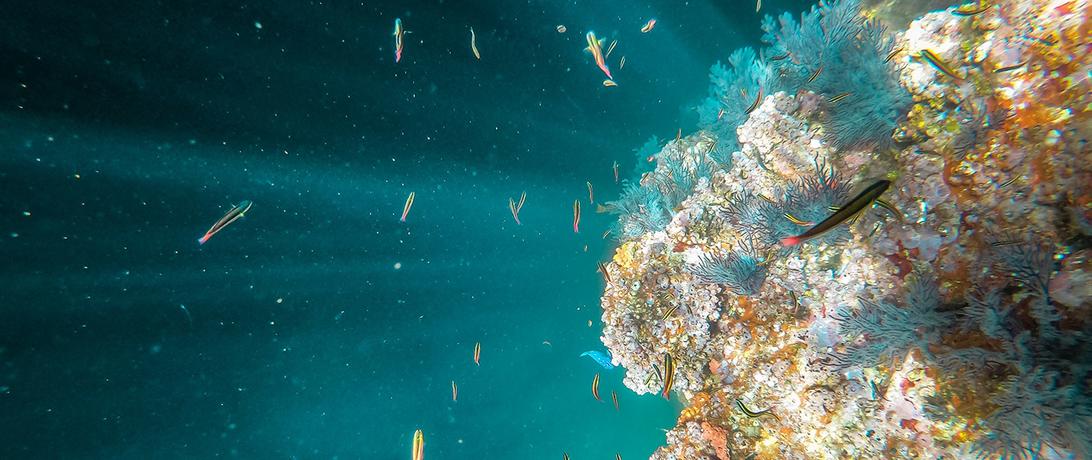
Marine genetic resources hold the potential for medical and industrial breakthroughs. But will they be a flashpoint for fisheries conflict?
By Dr. Elizabeth Nyman, Texas A&M University at Galveston
Fish have long been important commodities for many reasons—nutritional value, cultural tradition, and more. But thanks to advances in science, fish and other living creatures of the sea are valuable for a new reason: their genetic resources.
The field of study into marine genetic resources, or MGRs, is fairly new but growing rapidly. Biological compounds taken from marine resources include those with potential medical benefits, like anticancer agents, and those with industrial value, like antifreeze proteins. These biologically derived compounds can then be patented by those who isolate and test them, to be used for potential profit.
This “bioprospecting” has led to a number of important questions, none of which has yet been satisfactorily answered. Who owns the genetic resources of fish and other living things? At what stage of research is it appropriate to consider ownership of the derived compound? And what might a fair and equitable bioeconomy of marine organisms look like?
The first question, who owns the genetic resources, is a complicated one. The United Nations Convention on the Law of the Sea, or UNCLOS, provides states with a claim to ownership of the living resources within a particular distance from their coasts. This exclusive economic zone (EEZ) gives states the right to control and exploit living resources up to 200 nautical miles from shore. But fish are not stationary objects and can easily move from one EEZ to another. This problem has led to more traditional fisheries conflict, as fish move from one country to another, but it also is a difficulty for bioprospecting given the importance of where the fish are caught.
Marine genetic resources can be considered in three different ways. The first, in situ, is the genetic resource where it is found, so where in the ocean it is located. If it is in an EEZ, in situ ownership belongs to the state that controls that zone. (In the high seas, the situation is a little more complicated, and currently member states of the United Nations are considering that very question.) But in situ genetic resources are not available in a useful state—the fish is just a fish. It requires processing to extract the information necessary for patents and profit.
Ex situ genetic resources are those that have been extracted from the fish and processed outside the ocean. This would be like taking the fish back to a lab for analysis and testing. Once physical extraction of resources is completed, then in silico resources, those analyses and models done by computer, come into play. State patent laws cover ex situ and in silico ownership, for the most part.
This leads into the second question: At what point is ownership of MGRs and their derivatives conferred? Is it in situ, ex situ, or in silico? This is an important question to consider because these fish and other marine living resources could be found in developing countries or in the uncontrolled waters of the high seas, but they are generally removed back to developed countries for analysis, testing, and modeling. Is the country of origin or the country of analysis the rightful owner? Given the expense of this research, the ex situ or in silico portion of the research could take place in multiple countries.
And lastly, what is fair? Is it exploitation for rich countries and their industries to take the marine living resources of poorer countries, extract a potentially valuable product from them, and then reap all the financial rewards? In current debates at the United Nations over resources of the high seas, this question was one of the most hotly contested.
How could this potentially lead to conflict? First, it can pit small-scale fishers against each other, as wealthier states, corporations, or researchers seek to use local knowledge of fisheries to find those with potential MGR value. Second, since these are not yet well covered under international law, there could be disputes over ownership of rights between states or other entities. A fish found in one state’s waters could also be found in another’s, and it is difficult to say how that might impact patent laws locally as well as internationally. And third, it could cause conflict as bioprospectors move farther from shore. Right now, most work is done with coastal marine resources, but those species that have adapted to live under specific conditions—the pressure and dark of the deep sea, or the icy cold of the polar regions—are likely to exhibit unique properties. But these areas are the hardest to govern, either locally or internationally.
The current bioeconomy for MGRs is very small, and there are few willing to undertake the tremendous expense of conducting this kind of experimental research. But the same qualities that make certain fish unique—their resistance to cold or pressure or darkness—will be those that cause researchers to seek them out. And the uncertain status of MGRs, particularly those caught outside areas of state control, means that this could be a hot button issue for years to come.
The author credits Elizabeth De Santo, Elizabeth Mendenhall, and Rachel Tiller for their work on this topic. All errors remain the sole fault of the author.
Article Details
Published
Topic
Program
Content Type
Opinion & Insights